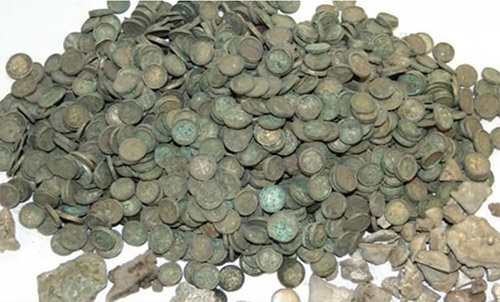
Talk About Wealth Preservation, Part 2

In our last commentary, Talk About Wealth Preservation! Part I, we made the point that wealth preservation, even for a single century, cannot be trusted to paper currency. On the contrary, paper money’s track record for preserving value is beyond dismal. Gold’s performance is superior.
Gold stands the test of time.
Perhaps someone will object, insisting that a hundred-year investment in premium stocks denominated in dollars is an even better means of wealth preservation. That is a popular idea, endlessly promoted by stock brokerage houses.
We object to that nonsense by simply pointing out that the best-known index of the stock market’s performance, the Dow Jones Industrial Average, has been around for 125 years. It was originally an average of 12 stocks but was adjusted to an average of 30 stocks 93 years ago. Yet too often unnoted is that the DJIA’s composition has changed dozens of times over the years. Companies that were once mainstays of American industry, companies that have longs since failed and disappeared have been dropped from the average and replaced over the years. For example, long-standing DJIA heavyweight General Motors is missing in action from the index today, while Apple, a company that didn’t even exist 50 years ago, is today an important component of the Dow.

The point is that while the DJIA may be a useful indicator of something about the US economy, it is not a useful measure of long-term wealth preservation.
On the other hand, gold is the world’s premier tool of wealth preservation. And not just for a century, as we described in our prior post, but for thousands of years.
Gold is one of the least reactive chemical elements. Of the noble metals (differentiated from the base metals), it is the noblest, resisting corrosion and oxidation like silver and platinum. So resistant to corrosion is it that when pirated treasures are recovered from the ocean floor after hundreds of years, the gold coins retain the shine and luster they had the day they slipped into the watery depths.
We think gold’s durability and incorruptibility are in some way analogous with its performance as money.

Just months ago, an archaeologist with the help of a local priest uncovered a medieval treasure of 6,500 gold rings, silver ingots, and silver coins in a Polish cornfield. The 900-year-old hoard intact, although it was simply wrapped in linen in a basket inside a ceramic vessel. All that ancient wealth was completely preserved through the centuries.
The Polish “zlotny” is the official currency of that part of the world today. We simply cannot bother to track how many iterations of the zlotny there have been, even in modern times. In any case, like the US dollar, it has not been a good means of wealth preservation.
Unlike precious metals, which are the incorruptible enduring money of the ages. We hope these commentaries about wealth preservation will encourage you to preserve wealth for yourself and your family during these increasingly risky times.
